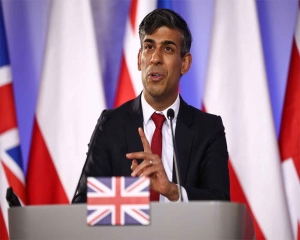Commodity prices have, over the years, played a significant role in shaping the economic activities of countries. The sharp price fluctuations in metals and minerals that was a regular feature during the Covid pandemic in the past have influenced the revenue generation indices of different countries in their roles as exporters and importers.
The World Bank report on Commodity Prices, which is a revised version of its October 2020 report, provides interesting insights. The forecasts of different commodities, including a few agricultural goods, and the impact of metal and mineral price changes on real output are the outcome of a statistical model spanning a long-term series of production, consumption and price data during 1970-2019. The results show that a 20 per cent rise in metal prices would lead to 0.32 per cent rise in economic activity two years after the increase.
It stated that globally, base metals account for around 7 per cent of global commodity demand in value terms, which is one-sixth of crude that comprise around 42 per cent of global commodity demand. Interestingly, a number of small sized countries hold important positions in the metal reserve. While Chile accounts for around 23 percent of copper reserves, followed by Australia and Peru with 10 per cent each, Guinea, a small country in West Africa, holds around 25 per cent share of bauxite reserve which is used in aluminium production. Indonesia has around 24 per cent global reserves of nickel. China holds around 23 per cent of tin reserves, while Australia holds the largest lead ore reserves (40 per cent) and Zinc deposits (27 per cent).
In terms of refined metal production, China is the leading producer accounting for nearly 35-55 per cent of global production like in aluminium (55 per cent share) and Nickel (35 per cent). From 2000 onwards the spectacular rise in production of all refined metals and metal ores has given China significant influence on the production and pricing of these commodities.
Some of the immediate forecasts are interesting. It needs to be reiterated that these forecasts are made prior to the second wave of the pandemic, which appears to be more venomous. The crude oil price, which is currently hovering around $ 65.8/bbl (Brent crude) is likely to average $ 56/bbl in 2021, and rise to $60/bbl in 2022. This is based on the assumption that oil demand in 2021 is likely to be 3 per cent lower than the 2019 levels and oil demand will return to pre-pandemic level in 2023 only. The fuel demand in the EU and partly in the USA would be marginally reduced with the emergence of electric vehicles (EVs) in the auto segment. Natural gas prices in the US are slated to remain at the same level as the current one for the rest of 2021 (US price $2.8/mmbtu) and rising marginally to $2.9/mmbtu in 2022.
The demand for coal has dropped by 5 per cent in 2020 as a part of the overall slowdown. Overall 37 gigawatts of coal generating capacity has been retired mostly in the EU and USA. There is a distinct shift towards fossil-free electricity in the form of renewable energy worldwide, including India.
The trend of transforming coal to syngas and using it for DRI, chemical and fertilizer downstream products is the latest development although the pace is slower in our country than expected.
Coal price rise in recent times is due to supply-related issues, banning of coal imports from Australia by China with alternate sources found in Indonesia, South Africa, Russia and USA and stable demand from India. Currently the ruling price of premium low vol coking coal (freight-on-board price) in Australia at $110/t is likely to fluctuate along with slack in demand growth due to the return of the pandemic, however, it would broadly stabilize in 2022. The current high prices of aluminium and nickel are to remain at an average $2200/t and $16500/t respectively in 2021 with marginal deceleration in 2022.
Iron Ore prices have risen by nearly 25 per cent in Q1 2021 primarily due to unabated demand from China. The high prices of Iron Ore have already prompted additional supply investments in Australia, Brazil, Canada and Liberia. Currently the import price of Iron Ore (Brazilian blend fines) cfr China port ruling at $190/t is projected to hover around $135/t for the full year of 2021 and at $100/t in 2022.
However, the Jharkhand-based steel players, especially those lacking captive mines, have been hit even harder because of low production and increased exports of iron ore. Iron ore production has dropped by more than 25% and production stood at 20.8 million tonnes (MT) in FY '21 versus a production of 28.2 MT in FY’20.
Merchant iron ore leases in Jharkhand, which expired in 2020, have yet to be renewed leading to acute shortage iron ore in Jharkhand.
Since steel making is a continuous process and the plant requires uninterrupted raw material supply at optimal cost, the Jharkhand Government needs to review raw material availability to the fledgling private industry which does not have its captive mines. Again, government-owned SAIL, which was expected to sell iron ore from its captive mines through the auction route, has cancelled it in Jharkhand, though it continues to do so in Odisha and Jharkhand.
Hence, distraught steel players, whose production have taken a hit, are pleading to accelerate the reopening of mining leases in Jharkhand, allowing SAIL to sell iron ore from captive mines and the sale of unsold iron ore of old lease holders through the e-auction route.
As assured supply of Iron ore is critical to sustain operations, to tide over a challenging phase of supply disruption, fast-tracking availability of Iron ore from Jharkhand mines is essential to provide some relief to the steel players. This would not only help the steel sector but also the Government by collection of taxes and duties coupled with the quintessential aspect of generation of direct and indirect employment.
The devastating return of the pandemic in India, if not controlled, may hit almost all the economic and social segments. Commodity prices (coal, iron ore, crude, aluminium, nickel, zinc to name a few major ones) that are crucially dependent on demand from end users, households and the retail sector, may face an uncertain future. Indian steel producers, however, may exploit export opportunities in full as global prices of finished products, determined by relatively better economic fortunes in the US,EU, Japan, China, may still rule high compared to domestic prices.
The writer is Director General, Institute for Steel Development and Growth.

























